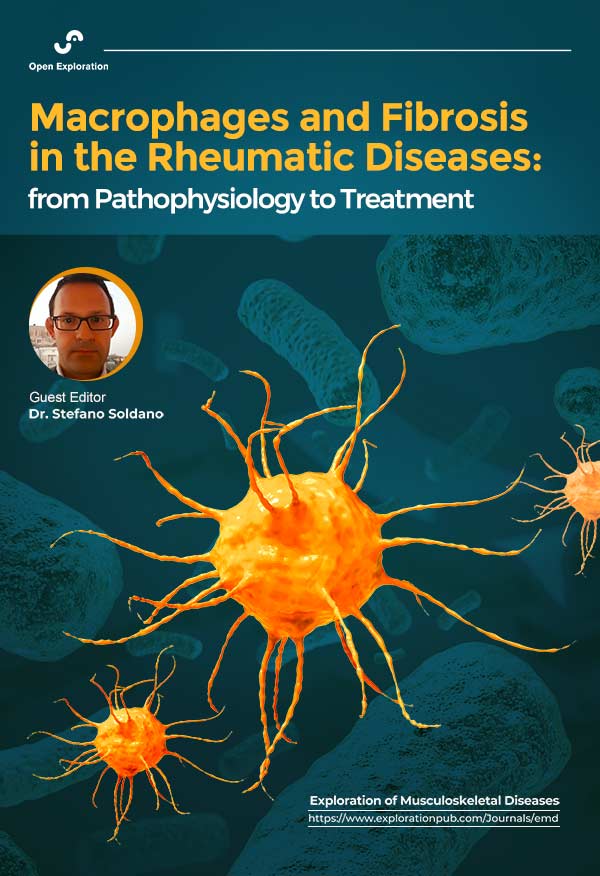
Macrophages and Fibrosis in the Rheumatic Diseases: from Pathophysiology to Treatment
Guest Editor
Dr. Stefano Soldano E-Mail
Laboratory of Experimental Rheumatology, Academic Division of Clinical Rheumatology, Department of Internal Medicine, IRCCS Polyclinic San Martino hospital, University of Genova, Genoa, Italy
About the Special lssue
Macrophages are tissue-resident professional phagocytes and antigen-presenting cells belonging to the innate immunity. Although these cells are essential in physiological conditions, primarily in maintaining tissue homeostasis and integrity, they are crucially involved in some pathological conditions, including autoimmune diseases, by both driving inflammation and promoting the development of tissue fibrosis.
Macrophages were at first classified as classically and alternatively activated macrophages (M1 and M2). Macrophages exposed to interferon gamma and/or lipopolysaccharides (LPS) polarize into a proinflammatory M1 with a higher production and release of pro-inflammatory cytokines, such as interleukine-6 (IL6), IL1 and TNF-; when stimulated with IL-4, IL-13 and IL10, macrophages can polarize into an anti-inflammatory and profibrotic M2 phenotype. Although this initial model, the complexity of in vivo systems, including the presence of diverse temporally and spatially restricted activating signals, has demonstrated a wide spectrum of macrophage polarization states rather than dichotomous categories.
The recent research focused on macrophages aims to define a more complete characterization of macrophages both at functional and phenotype level during the fibrotic process and their spatial distribution/localization within specific niches in the tissues affected by fibrosis; moreover, another important aspect of the current research on macrophages is represented by the possibility to understand which mechanisms and treatments are able to promote the shift from a “bad” to a “good” polarized phenotype or the reprogramming of polarization state of macrophages up to and including the trained immunity.
This special issue aims to have an overview on the macrophage biology and their role in the fibrotic processes in autoimmune rheumatic diseases, highlighting the recent findings related to the phenotypic and functional characterization of these cells, their gene signature, and gene expression profile. Moreover, the description of possible new treatments able to block/contrast the damaged activity and function of macrophages in both proinflammatory and fibrotic in vitro processes may complete this macrophage overview.
Keywords: Macrophages, fibrosis, functional profiling, in vitro treatments targeting macrophages